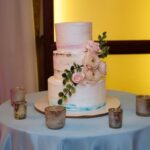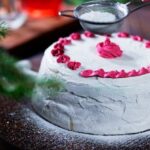Are you wondering how to decorate cake with royal icing in Nigeria? Cake decorating is an art that has been gaining popularity in Nigeria, and one of the most favored techniques is using royal icing.
Royal icing allows for intricate designs and beautiful decorations that can elevate any cake to a work of art. In this article, we will explore the ins and outs of decorating cakes with royal icing in Nigeria, from understanding the ingredients and techniques to creating stunning designs.
Royal icing has become a staple in Nigerian cake decorating due to its versatility and ability to create intricate details. Understanding the intricacies of royal icing, such as the right consistency and appropriate ingredients for the Nigerian climate, is crucial for successful cake decorating. With the rising demand for beautifully decorated cakes in Nigeria, mastering the art of royal icing is essential for any aspiring baker or cake decorator.
From preparing the cake to adding final touches and embellishments, there are various stages involved in decorating a cake with royal icing in Nigeria. We will delve into each step of the process and provide valuable tips on baking and preparing the cake, different piping techniques suitable for Nigerian climate, using food coloring effectively, creating traditional and modern designs, avoiding common mistakes, and adding finishing touches for a stunning presentation.
Whether you are a beginner or an experienced baker looking to enhance your skills, this article will guide you through the intricate world of decorating cakes with royal icing in Nigeria.
Understanding Royal Icing
Royal icing is a popular choice for cake decorating in Nigeria due to its smooth, elegant finish and versatility. Understanding the ingredients and achieving the right consistency are crucial for successful royal icing decoration, especially in the Nigerian climate.
When preparing royal icing in Nigeria, it is essential to use the following ingredients:
- Confectioner’s sugar
- Egg whites or meringue powder
- Water
- Flavoring (optional)
In the Nigerian climate, where humidity levels may be higher, achieving the right consistency for royal icing can be a challenge. Here’s how to achieve the perfect royal icing consistency for cake decorating in Nigeria:
- Start with a small amount of water when mixing the confectioner’s sugar and egg whites or meringue powder.
- Gradually add more water as needed while mixing until you reach the desired smooth, thick, but still slightly runny consistency.
- If the icing is too thin, add more confectioner’s sugar. If it is too thick, add more water sparingly.
By mastering the art of preparing royal icing and understanding how to achieve the right consistency in the Nigerian climate, cake decorators can create stunning designs on their cakes with ease.
Royal icing can be a versatile and beautiful way to decorate cakes in Nigeria. By mastering the ingredients and adjusting for climate differences, decorators can create intricate designs that will impress friends and family alike.
Preparing the Cake
Baking and preparing the cake before decorating with royal icing is a crucial step in achieving a beautiful and delicious final product. In Nigeria, where the climate can be hot and humid, it is important to take certain factors into consideration when preparing the cake for decorating.
One of the first things to keep in mind is the type of cake that will be best suited for decorating with royal icing in Nigeria. A dense and stable cake, such as a pound cake or a fruitcake, is recommended as it will hold up well under the weight of the royal icing. Additionally, it is essential to allow the cake to fully cool before starting the decorating process to prevent any melting or sliding of the icing.
Another important aspect of preparing the cake for royal icing decoration is to ensure that it has been leveled and layered properly. This will provide a smooth and even surface for applying the royal icing and will ultimately result in a more professional-looking finished product. It’s also important to consider any fillings or frostings that will be used between layers, as they can impact how well the royal icing adheres to the cake.
Lastly, it’s essential to make sure that the cake is free from any crumbs or loose bits before applying royal icing. Crumb coating the cake with a thin layer of buttercream or ganache can help create a smooth surface and prevent any crumbs from showing through the final layer of royal icing.
When you’re ready to decorate your cakes with royal icing in Nigeria, these preparation tips can help ensure that you have a solid foundation on which to create stunning designs.
| Preparation Tip | Description |
|---|---|
| Choose a stable cake | A dense and stable cake like pound cake or fruitcake is best for holding up under royal icing. |
| Allow proper cooling time | Cakes should be fully cooled before decorating to avoid melting or sliding of royal icing. |
| Level and crumb coat | Properly level, layer, and crumb coat your cakes for an even surface free from loose bits. |
Piping Techniques
Choosing the Right Piping Tips
When it comes to decorating cakes with royal icing in Nigeria, selecting the right piping tips is essential. The type of tip used will determine the thickness and style of the design. For intricate details, smaller tips such as #1 or #2 are recommended, while larger tips such as #12 or #14 are better suited for creating borders and filling in larger areas.
Basic Piping Techniques
One of the most basic piping techniques for decorating cakes with royal icing in Nigeria is the “outline and fill” method. This involves using a round tip to outline the design and then filling it in with flood icing for a smooth finish. Another common technique is “rosette piping,” which creates beautiful floral patterns by applying pressure to the icing bag while rotating it in a circular motion.
Advanced Piping Techniques
For more experienced decorators, advanced piping techniques can take cake decoration to the next level. “Basketweave piping” creates a woven pattern that adds texture and dimension to the cake, while “scroll piping” produces elegant, swirling designs reminiscent of classic lace patterns. With practice and patience, these advanced techniques can elevate the visual appeal of cakes decorated with royal icing in Nigeria.
Learning how to decorate cakes with royal icing in Nigeria requires time and dedication, but mastering different piping techniques can open up a world of creative possibilities for cake decorators. By understanding the right piping tips to use, practicing basic and advanced techniques, and experimenting with various designs, decorators can create stunning works of edible art that showcase their skills and creativity.
Adding Color
When it comes to decorating cakes with royal icing in Nigeria, using food coloring is a crucial step in creating beautiful and vibrant designs. The Nigerian culture is known for its rich and colorful designs, and this is also reflected in cake decorations. Whether it’s for a traditional celebration or a modern event, adding color to your royal icing can truly make your cake stand out.
One important tip when using food coloring in Nigeria is to consider the local climate. With the warm and humid weather in many parts of the country, it’s essential to use gel-based food coloring instead of liquid ones. Gel-based food coloring holds up better in humidity and won’t change the consistency of your royal icing, ensuring that your designs stay intact.
To achieve vibrant colors when decorating cakes with royal icing in Nigeria, start by using small amounts of food coloring and gradually add more if needed. This approach allows you to control the intensity of the color without going overboard. Additionally, experimenting with different combinations of colors can help you create unique shades that reflect the theme or purpose of the cake.
Another useful tip for using food coloring in Nigeria is to invest in high-quality products. While there are various options available, using reputable brands can make a significant difference in the outcome of your cake decorations. By prioritizing quality over quantity, you can ensure that your designs are not only visually appealing but also safe for consumption.
| Decorating Tips | Nigeria |
|---|---|
| Use gel-based food coloring | Recommended for humid climate |
| Start with small amounts | Control intensity of color |
| Invest in high-quality products | Ensure safety and visual appeal |
Creating Designs
Gele
One traditional design idea for decorating cakes with royal icing in Nigeria is to incorporate the popular head wrap known as gele. Gele is often worn on special occasions and can be recreated using royal icing to add a cultural touch to the cake.
Aso Oke
Another traditional Nigerian design that can be incorporated into cake decoration is Aso Oke, which is a type of fabric often used for special events. This intricate pattern can be recreated using royal icing to add elegance and tradition to the cake.
Afrocentric Patterns
Incorporating modern Afrocentric patterns into the cake decoration can create a contemporary look. Using royal icing, bakers can emulate bold African prints and designs, adding a trendy twist to their cake creations.
Nigerian Landmarks
Modern design ideas also include incorporating iconic Nigerian landmarks into the cake decoration. Using royal icing, bakers can recreate images of landmarks such as the Zuma Rock or Kainji Dam, showcasing national pride and cultural significance.
By combining traditional and modern design ideas when decorating cakes with royal icing in Nigeria, bakers can create visually stunning and culturally meaningful masterpieces that are perfect for any occasion.
Common Mistakes
Decorating cakes with royal icing in Nigeria can be a beautiful and rewarding experience, but it’s important to be aware of common mistakes that can occur, especially in the Nigerian climate. One of the most common mistakes is not considering the humidity and temperature when working with royal icing.
Due to Nigeria’s hot and humid climate, royal icing can be quite challenging to work with as it tends to become too runny or even melt. To avoid this, it’s crucial to adjust the consistency of the royal icing accordingly by adding more powdered sugar to thicken it.
Another common mistake when decorating cakes with royal icing in Nigeria is not properly preparing the cake before applying the icing. It’s essential to ensure that the cake is completely cooled before applying royal icing as any warmth from the cake can cause the icing to melt.
Additionally, if there are any crumbs on the surface of the cake, they can get mixed into the royal icing and affect the overall appearance. Therefore, it’s important to apply a thin layer of buttercream frosting on the cake before using royal icing to create a smooth base for decorating.
Furthermore, not allowing enough time for the royal icing decorations to dry is also a common mistake when decorating cakes in Nigeria. Due to high humidity levels, royal icing takes longer to set and dry compared to other climates.
It’s important to allow ample time for each design element to dry completely before adding additional layers or decorations. Rushing this process can lead to smudged or damaged designs, so patience is key when decorating cakes with royal icing in Nigeria.
Finishing Touches
After mastering the art of piping techniques and creating vibrant designs with royal icing, it’s time to add the finishing touches to your decorated cake in Nigeria. These final embellishments will elevate your cake from beautiful to stunning, making it a true centerpiece for any special occasion. Here are some tips and ideas for adding those final touches:
- Edible Flowers and Greenery: One way to add a touch of elegance to your decorated cake is by incorporating edible flowers and greenery. In Nigeria, you can use local flowers such as hibiscus or bougainvillea to create a unique and beautiful design. Simply place them strategically on the cake for a natural, yet stunning effect.
- Gold or Silver Accents: Using edible gold or silver leaf, dust, or paint can instantly make your cake look more luxurious and sophisticated. Whether you choose to add delicate accents around the edges or create intricate designs with metallic hues, this is sure to impress your guests in Nigeria.
- Piped Buttercream Details: To add depth and texture to your cake decorations, consider using buttercream in combination with royal icing. Piping small details such as lace patterns, borders, or swirls with buttercream can give your cake a more dynamic look that will wow anyone who sees it.
Adding these final touches will not only enhance the overall appearance of the cake but also showcase your skills as a decorator. Remember that the key to successful embellishments is balance – carefully consider where each element should go on the cake for a visually appealing result.
Conclusion
In conclusion, decorating cakes with royal icing in Nigeria is an art form that continues to gain popularity due to its versatility and ability to create stunning designs. With the understanding of royal icing, the right consistency, preparation of the cake, piping techniques, use of food coloring for vibrant designs, and creation of traditional and modern designs, anyone can elevate their cake decorating skills.
By avoiding common mistakes and adding finishing touches, cake decorators in Nigeria can achieve professional-looking results right at home.
It is essential for aspiring cake decorators to remember that practice makes perfect when it comes to using royal icing in Nigeria. It may take some trial and error to master different techniques and designs, but patience and persistence will yield beautiful results. The satisfaction of being able to create personalized and unique cakes with intricate royal icing decorations is not only rewarding but also a great way to impress friends, family, or customers.
As we conclude this guide on how to decorate cakes with royal icing in Nigeria, we encourage all our readers to unleash their creativity and experiment with various designs. Whether it’s for a special occasion or just for personal enjoyment, the art of cake decorating with royal icing offers endless possibilities for creating edible works of art that are sure to leave a lasting impression. So don’t hesitate – get your tools ready and start decorating.
Frequently Asked Questions
Can You Use Royal Icing to Decorate a Cake?
Yes, royal icing can be used to decorate a cake. It is a versatile frosting that can be piped into various designs, including borders, flowers, and intricate patterns.
How Do You Decorate With Royal Icing for Beginners?
Beginners can start decorating with royal icing by practicing basic techniques such as outlining and flooding. This involves piping an outline around the edge of the design and then filling it in with a thinner consistency icing. As skills improve, more complex designs can be attempted.
Can I Coat a Cake in Royal Icing?
While it is possible to coat a cake with royal icing, it’s not the most common method of frosting a cake. Royal icing tends to result in a hard, dry finish which may not be ideal for every type of cake.
However, some bakers do use royal icing to create smooth finishes on certain types of cakes or for intricate designs on special occasion cakes.

Welcome to my blog about home and family. This blog is a place where I will share my thoughts, ideas, and experiences related to these important topics. I am a stay-at-home mom with two young children. I hope you enjoy reading it! and may find some helpful tips and ideas that will make your home and family life even better!





